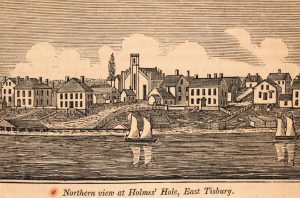 Recently, I traveled to Martha’s Vineyard to conduct some research at the Dukes County Registry of Deeds. There, as I was learning about property located in Tisbury, I came across some familiar folks – my great-great-great-grandparents! In another genealogical coincidence, I learned that the gentleman I was researching bought my great-great-great-grandparents’ home in Tisbury. Continue reading Frog Alley
Recently, I traveled to Martha’s Vineyard to conduct some research at the Dukes County Registry of Deeds. There, as I was learning about property located in Tisbury, I came across some familiar folks – my great-great-great-grandparents! In another genealogical coincidence, I learned that the gentleman I was researching bought my great-great-great-grandparents’ home in Tisbury. Continue reading Frog Alley
Tag Archives: Family stories
When everything changed
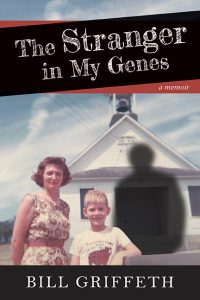 The rustic handmade sign above the door said “Ye ol’ Genealogical Research Center Library and Museum.” The letters were in Old English style. They were painted yellow over a green background, and they perfectly captured the upbeat, cheery nature of my friend Tom.
The rustic handmade sign above the door said “Ye ol’ Genealogical Research Center Library and Museum.” The letters were in Old English style. They were painted yellow over a green background, and they perfectly captured the upbeat, cheery nature of my friend Tom.
“Step in,” he urged me. I walked through the door and into his study. This was where he had spent the first fifteen years of his retirement researching his family’s history. Even before I entered the room, I knew what I would see, and I didn’t like it. Continue reading When everything changed
Turbulent times
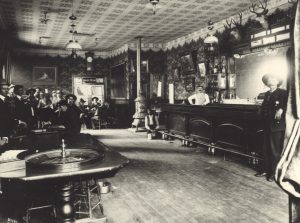
In the first year of Kenny and Alice McLean’s daughter’s life, labor strife at the Telluride mines was affecting the community.
On 1 September 1903, difficult and scary times came to Telluride. Union members demanding an eight-hour rather than a twelve-hour workday walked out of Telluride’s ore processing mills. This shutdown caused the closing of area gold and silver mines. When the Tomboy gold mine tried to reopen with nonunion workers (strikebreakers or “scabs”), the union posted armed picketers to prevent the new workers from entering. Continue reading Turbulent times
In the news
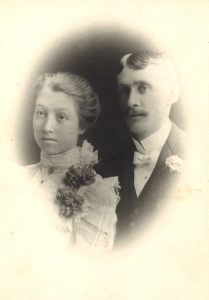
Amongst the family papers I inherited from my grandmother and great-uncle (orphans Thelma and Fred McLean in my earlier A Telluride story post), I found several old shiny Xerox copies (remember these?) of news articles my great-uncle Fred had made. He must have kept his local library swimming in copy revenue judging by the many such copies I found amongst his papers.
Fred McLean was our family genealogist. He dutifully typed up family stories, transcribed census records and letters, and then sent copies to his sister and her four children, one of whom was my mother, Thelma Jr. I wish Fred were alive today because it was due to him that I have an interest and now gainful employment in the field of genealogy. Continue reading In the news
Journaling
 Has anyone else gotten into the new analog journaling craze? Often called “Bullet Journaling,” it is a return to the old, handwritten method of keeping records. There are many templates that can be followed, but the Bullet Journal (BuJo) is intended to be thoroughly individualized by the writer to suit his or her needs.
Has anyone else gotten into the new analog journaling craze? Often called “Bullet Journaling,” it is a return to the old, handwritten method of keeping records. There are many templates that can be followed, but the Bullet Journal (BuJo) is intended to be thoroughly individualized by the writer to suit his or her needs.
Among records that might be kept in a BuJo are calendars, daily schedules, events, future planning, goals, inspirational quotations, doodles, and collections. Some people decorate their BuJos with neat hand lettering, images, icons, washi tape, and more (check out Pinterest and YouTube for ideas). Some keep all of their information in one journal, others have specialized journals for different subjects. Continue reading Journaling
A Loyalist history lesson
 One of the delightful things about genealogy is that it often leads us to learn, and re-learn, our history lessons in unexpected ways.
One of the delightful things about genealogy is that it often leads us to learn, and re-learn, our history lessons in unexpected ways.
I have struggled for many years trying to find any New York documents on my immigrant ancestor John LeClear. He came from France probably at some point in the 1760s. I had first found him in the 1790 U.S. Census living in Half Moon, Albany County, New York. My only other clues came from copies of copies of some letters written by his then 93-year-old grandson, Shubael, which laid out the names and marriages of the first couple of generations of the family, mostly without places or dates. Shubael did state the John lived near Poughkeepsie before moving north to Albany. However, no church, cemetery, or vital records have emerged to help support this statement. Continue reading A Loyalist history lesson
Your questions answered
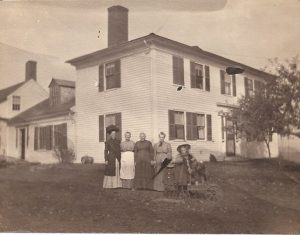
Sometimes we all, like Tennessee Williams, depend on the kindness of strangers – whether we realize it or not. While I’ve always shared my family research and stories, it has been only recently that I’ve come to understand how initiative, serendipity, and luck work together.
Four families – all my cousins – have lived in My Old House for the last 227 years, fine New England families who undoubtedly followed the old axiom “Use it up, wear it out, make it do, or do without.” Continue reading Your questions answered
The Parson Capen House
 The Parson Capen House sits in the historic section of Topsfield, Massachusetts, a charming New England town about 30 miles north of Boston. It is quite remarkable that this minister’s home has survived nearly unchanged since the seventeenth century. Visitors can walk in the rooms where the Reverend Joseph Capen and his family lived, and where Parson Capen undoubtedly contemplated the fate of parishioners accused and convicted of practicing witchcraft during the Salem Witch Trials. Continue reading The Parson Capen House
The Parson Capen House sits in the historic section of Topsfield, Massachusetts, a charming New England town about 30 miles north of Boston. It is quite remarkable that this minister’s home has survived nearly unchanged since the seventeenth century. Visitors can walk in the rooms where the Reverend Joseph Capen and his family lived, and where Parson Capen undoubtedly contemplated the fate of parishioners accused and convicted of practicing witchcraft during the Salem Witch Trials. Continue reading The Parson Capen House
History of a Cosmopolite

Some years ago I researched my husband’s ancestor Jerreb Kendall (1804–1839) of Passumpsic, Caledonia County, Vermont, and took pleasure in the interesting names given to many of Jerreb’s eleven siblings by their parents Jerreb and Lucy (Woods) Kendall.
I liked the thoughtfulness and weightiness behind given names like George Washington, William Wallace, Alonzo Ransom, James Eaton, Larnard Lamb, and Lorenzo Dow. (And I could almost sense the rejoicing that accompanied the selection of the name Lucy Celestia, which was given to the twelfth child – and the first and only daughter!) Continue reading History of a Cosmopolite
ICYMI: Family papers
[Author’s note: This blog post originally appeared in Vita Brevis on 19 August 2015.]
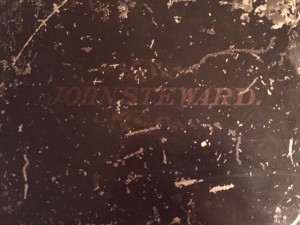 My grandfather died almost 25 years ago, and sometime before that he gave me a box of “family papers.” The box itself is rather striking: a metal strong box, easily portable, with my great-great-grandfather John Steward’s name stenciled on top in fading paint. Inside the box are not just family papers, but intriguing (and, of course, unidentified) daguerreotypes and examples of other early photographic processes, along with materials treating the family of my great-grandmother, Margaret Atherton (Beeckman) Steward (1861–1951). Continue reading ICYMI: Family papers
My grandfather died almost 25 years ago, and sometime before that he gave me a box of “family papers.” The box itself is rather striking: a metal strong box, easily portable, with my great-great-grandfather John Steward’s name stenciled on top in fading paint. Inside the box are not just family papers, but intriguing (and, of course, unidentified) daguerreotypes and examples of other early photographic processes, along with materials treating the family of my great-grandmother, Margaret Atherton (Beeckman) Steward (1861–1951). Continue reading ICYMI: Family papers